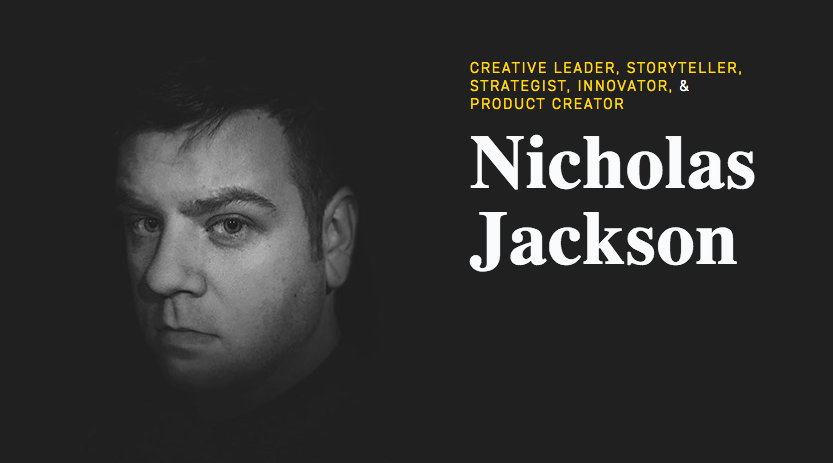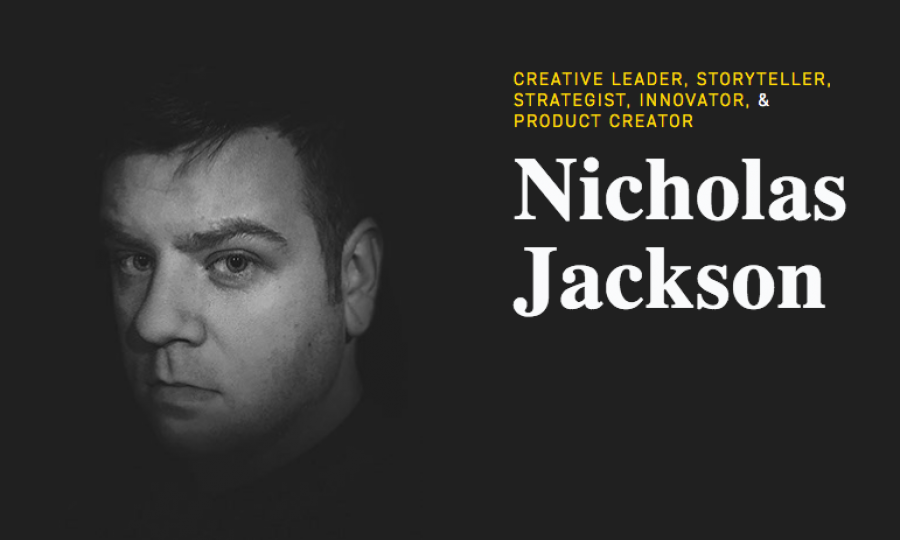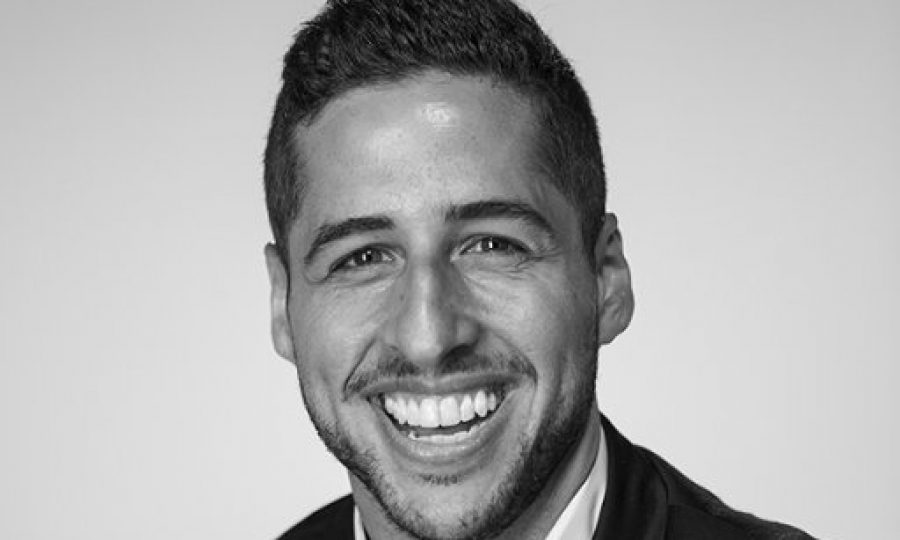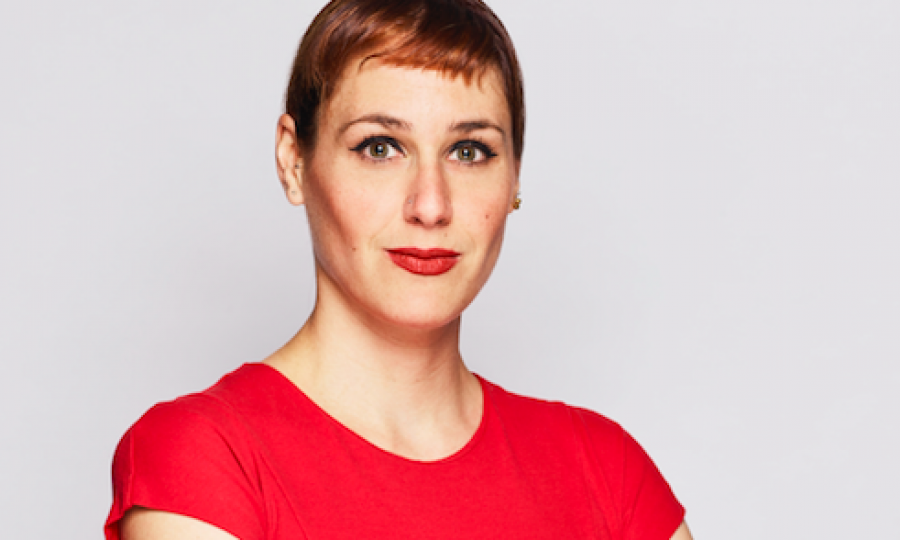Nicholas Jackson is a Creative Director living in Brooklyn. His work is concentrated in branded content, interactive design, advertising and branding. Over his career Nick has worked with clients such as Philips, GE and Shell and worked for companies such as SapientNitro, The New York Times and The Washington Post. Today, Nicholas consults for brands, publishers and content studios to help make their content processes smoother, collaborative and creative.
See examples of Nicholas’s great work here.
In this interview, we cover:
- The strategic & creative process for custom content campaigns.
- How to consistently produce quality content.
- How clients can get the best work out of their publishing partners.
- Nick’s favorite campaigns.
- Where the industry is lagging behind.
- The industries biggest opportunities.
- Challenges/threats to be aware of.
- Tips for brands creating custom content.
- Data’s role in the creation process.
- Custom content predictions.
Q: Talk us through the strategic and creative process for a custom content campaign.
“I think the first thing to remember when creating strategy for your clients is to “think big”. Clients often don’t understand the limits of custom content – Thinking big and remembering the client came to you as an expert in your field – so think about what large, big ideas work best for your audience.
When working for publishers, I would always encourage our clients to think about their cause – and the inspirational big picture they want to be associated with.
Now many clients come to publishers with very different KPIs – but I find it important to remind them that custom content is not about their company, but about the companies cause – what the company is trying to effect and change.
To get through all the noise out in the world of media it becomes important to tell a true story – something for people to connect with. This is why it’s important for brands to find their true cause and explore that.
If a brand is just looking to do a awareness push – ask them why the brand needs more awareness, dig under the original KPI and you will find the cause.
From the cause – think big! Think about the story that can be told – how can it connect with people, how it can inspire or have an empathetic connection.
Many clients come in looking for something that is “B2B” and have a very stern feeling about what “B2B” should be – but to me if you think big about “B2B” you will find something much more creative. There is no such thing as a “Business” engaging with custom content – it will be another person – thus a “B2B” campaign needs to still speak to people and connect / inspire in a unique way.”
Q: How do you ensure you produce the highest quality content on a consistent basis?
“Looking outside of your industry.
Many publishers get wrapped up in trying to have the next innovative product – 360, AR, AI…. This only goes so far as a first to market strategy before it becomes noise in the background with all the other custom content campaigns.
Looking at what other industries are doing for promotion, for brand awareness, for marketing and for tech. Use what is out in the world and try to think about new ways to use what’s there.
For instance – look at what spotify did for a brand awareness campaign. They plastered NYC with imagery of David Bowie. Most of which did not have the Spotify logo in it.
If I had to guess, a lot of the inspiration for this came from the exhibition at the Brooklyn Museum. Spotify looked at what culture was grasping on to and used that as a way to get recognized, have brand alignment with David Bowie and to inspire others.”
Q: How can clients get the best work out of their publishing partners?
“Brands come to publishers (hopefully) not just because of the audience numbers and type of reader. They are coming to these publishers and studios because they are the experts in their field.
It’s like going to a special Doctor for a procedure and not trusting the Doctor with the job. It’s important to listen to the Doctor, as he / she knows what they are doing.
Brands should trust the publishers they are working with – realize you choose them for a reason – and if there is some sort of friction between vision – you might not be communicating your vision clearly – or you KPIs are not in line and are conflicting.
Same goes for publishers – it’s your job to listen and get the right information from your client. From this put your best foot forward to with your strongest strategy. Understand your clients KPIs and don’t be afraid to say what will work and what won’t – you are responsible for the performance at the end of the day, so set clean and clear expectation about KPIs and how to get the best results.”
Q: Out of all the content campaigns you’ve been a part of, which one’s been your favorite and why?
“My favorite campaigns are the ones of returning clients. When a client comes back, it means they were happy with the last go-round and should be willing to place even more trust in your expertise.”
Q: Where do you think the industry is lagging behind?
“I think the industry is missing out on 4 main things.
1. Lack of groundbreaking tech – don’t hop on the bandwagon, create the bandwagon.
2. Getting away from the computer screen, why not go out into the real world – do something large and impactful.
3. Collaborations – not just with influencers but with other brands.
4. Social – this is the key way to drive traffic for most publishers yet they are not working to make it better – not working with social media for better tools, products, platforms, collaboration ect. Why just promote through social when you can bring storytelling directly to social? Have yet to see banded content done really well on social.”
Q: What’s the industry’s biggest opportunity?
“Expansion – not just being a small studio but branch out to more of a full service. This really allows you to get to the inner workings of your clients. This is how you get down to really innovative content.”
Q: What’s the industry’s biggest threat/challenge?
“Finding creative ways to promote without social. This will go away someday – we are already seeing it drift off. How to get away from the social machine and to stop paying for clicks.”
Q: What are your top three tips for brands when creating custom content?
1. “Be flexible on your KPIs – understand the limitations and trust the studio you are working with is looking into the most creative ways to combine, fulfill and have success for your campaign.
2. Be open to a new angle. Many brands come to publishers with a bad, boring, flat idea that is not as ready to just fit into digital media as they think. A lot of brands are adamant on doing infographics – yet have no data to support a juicy graphic with multiple data points (or legally can’t show data – looking at you finance clients). Maybe instead of an infographic your best off doing an explainer video.
3. Be collaborative and find a great story with your studio – trust their big ideas, the studio knows how the idea will work out in the end. If you just let the studio toss ideas and creative over the fence at you – I promise you will lose context, your feedback will be misaligned, and you will not understand how the studio is trying to bend ideas to hit the right KPIs.”
Q: What role does data play in the creation process?
“Data should be everything. Having data to backup your ideas is the most powerful tool you can have.”
However many studios have very small amounts of data and key findings. If a main KPI is video views for a clients’ $70K that is buried inside an interactive article, you better know where that video will perform the best.”
Q: What’s your custom content prediction for 2018?
“I think content will start moving back to big agencies actually. I think at the agency level is where the client communication and big ideas are really happening, by the time it gets back down to a publisher there doesn’t seem to be lot of room left on the table for big ideas.
Hopefully in 2018 studios will learn to productize and templitize in a way that still allows for lots of open creativity – they should take a key from small branding shops.”
Q: Anything else you’d like to share?
“If any publishers or content studios are looking for consultants to help open up a more successful and creative path – get at me [email protected]” 🙂

|
|---|




